Saving Hotel Podgorica: Who, If Not Architects?
Hotel Podgorica, one of the most important modernist buildings in the capital of Montenegro, has never been recognized as an important cultural heritage which, by all accounts, it is. A local group of activist architects is committed to changing that.
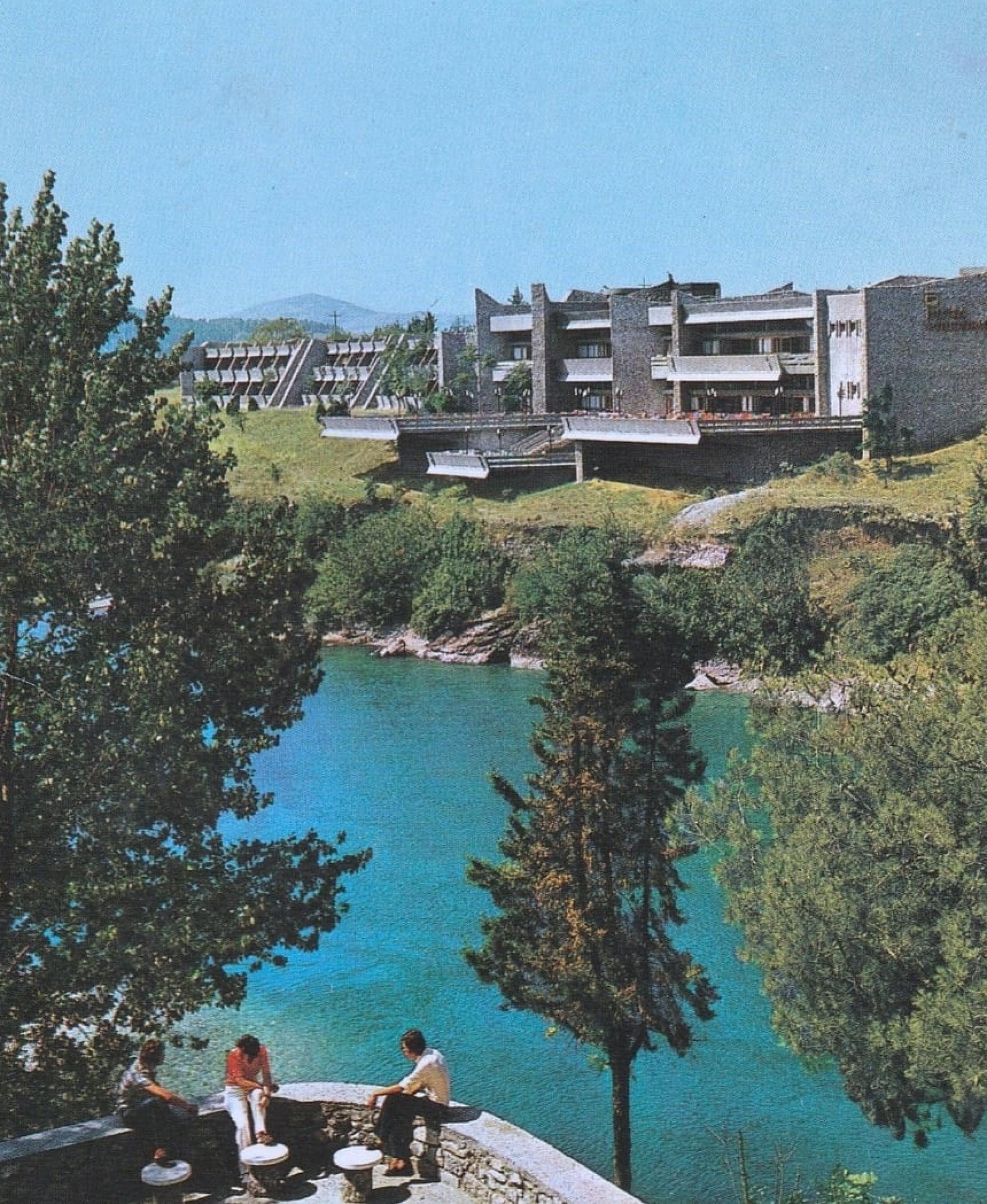
Hotel Podgorica in the 1980s | Photo © Podgorički cikotići
Podgorica is a very young – and a very new – capital city. Young because the capital of Montenegro was moved there from Cetinje, the old royal base, only after World War 2; new because World War 2 brought about such destruction that, once the war ended, the city had to be built anew, almost from the scratch. Rebuilt within a new country, Yugoslavia, and under a new name, Titograd, today’s Podgorica still exhibits the modernist principles and structures of 20th-century urbanism and architecture which shaped and accentuated the cityscape. This heritage is undoubtedly precious; also, it has undoubtedly been systematically neglected and eaten away by the unhinged and poorly regulated urban development of the postsocialist decades. One of the victims of this process has been Hotel Podgorica.

Hotel Podgorica has been built into the riverbank before other parts of the contemporary city of Podgorica (1970). | Photo © Podgorički cikotići
Hotel Podgorica was built in 1967, at the time when the city government was looking for new ways to include the Morača riverbank into the nascent urban fabric. The winner of the public architectural competition was Svetlana Kana Radević, whose project succeeded in joining together the modernist tendencies of Yugoslavian architecture with Montenegrin building traditions, all while respecting the specific location of this building site. Once the hotel was constructed, it inspired awe and glowing reviews from all over Yugoslavia. In the distinguished professional magazine Arhitektura Urbanizam, Zoran Petrović wrote about “real joy, to encounter such accomplishment, which stands out from the grayness of our architectural everyday life, to come into contact with the work which escaped the mediocre, which wanted to say something new and which was absolutely successful in doing so[…]”. The building was a Montenegrin contender for the Federal Borba Prize for Architecture, the most prestigious architectural recognition in Yugoslavia, and it won. Svetlana Kana Radević became the first and only Montenegrin architect to receive this award, as well as the youngest laureate to ever accomplish such a feat; she was 29. She was also the first and only woman presented with this prestigious prize.
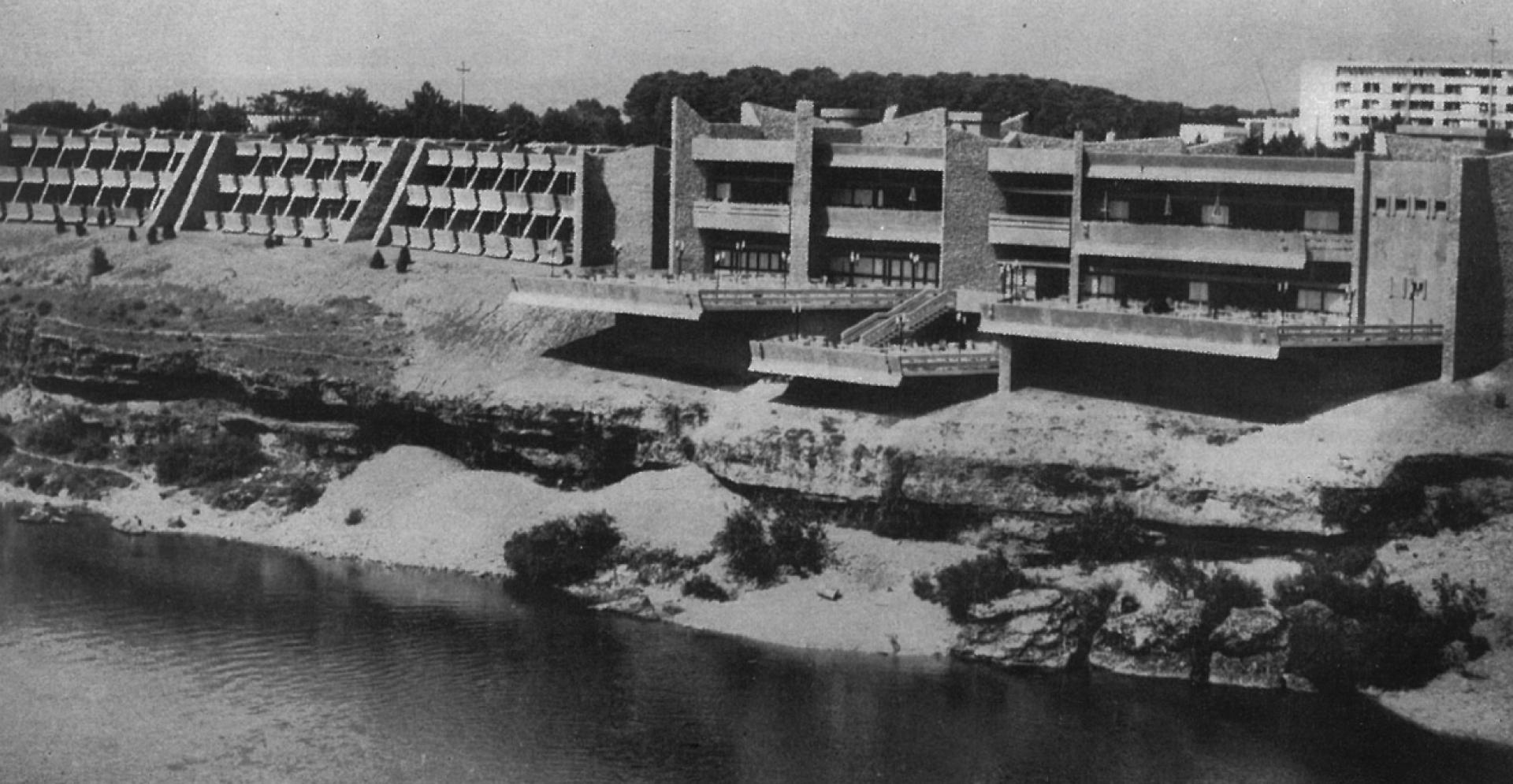
Hotel Podgorica | Photo © Arhitektura urbanizam, Vol. 45–46, Beograd 1967
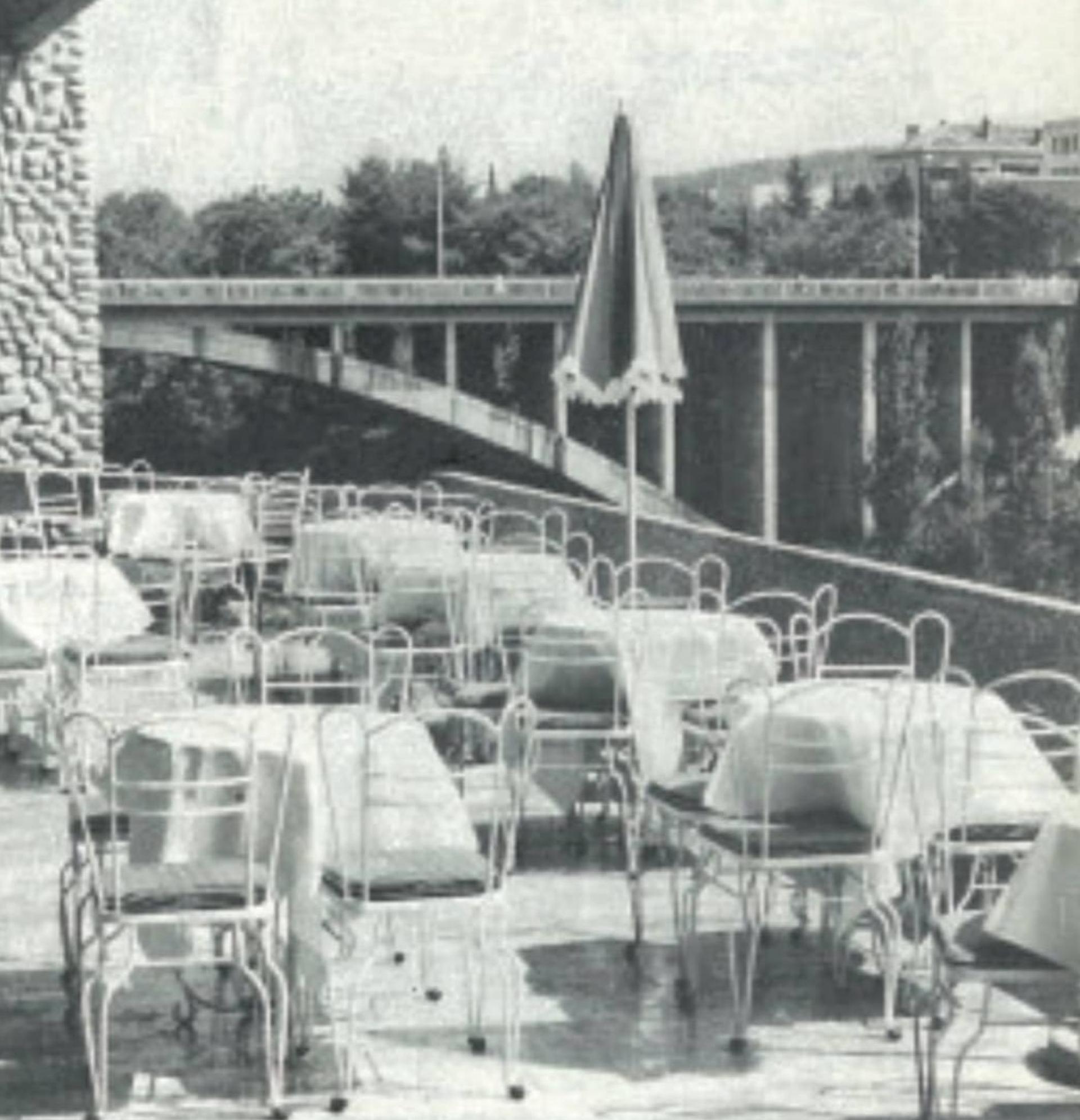
The terrace in 1979 | Photo © Podgorički cikotići

Main facade towards the river. | Photo © Archive Svetlana Kana Radević
Much has been written about the building of the hotel Podgorica since – it has definitely been one of the most researched objects of modern architecture in Montenegro. It was presented at Venice Biennale in 2004 and it was shown in the much-lauded MoMA exhibition on Yugoslavian architecture in 2018. Throughout this time the building has been deteriorating, unrecognized as architectural and cultural heritage by the Montenegrin institutions – hence, unprotected from the unprofessional repairs and reconstructions.
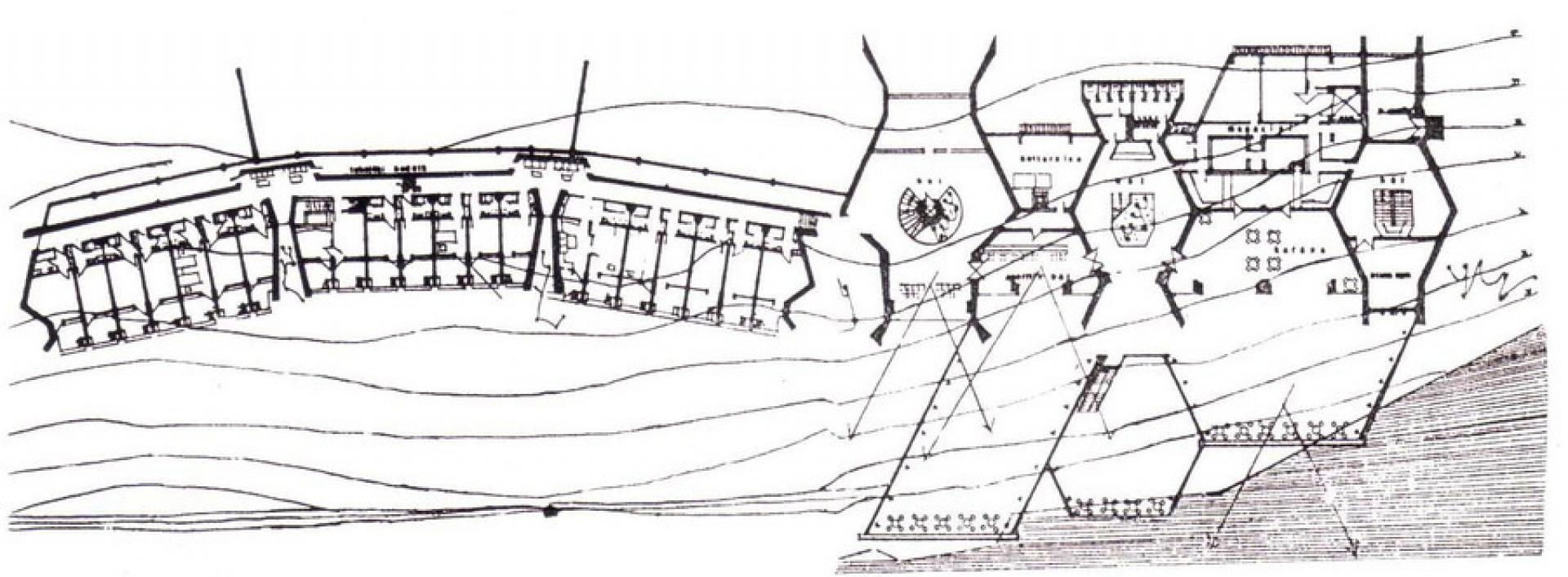
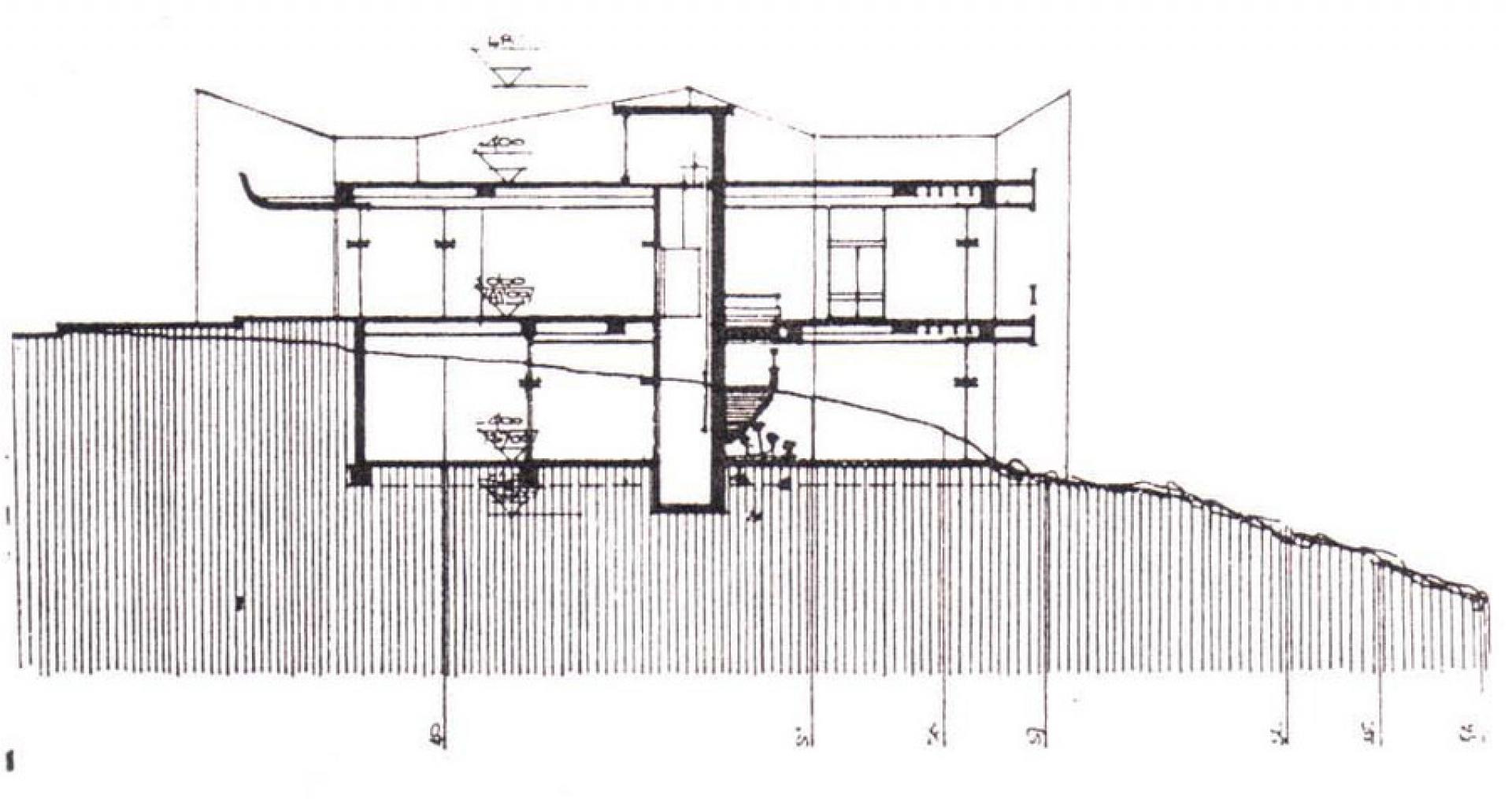
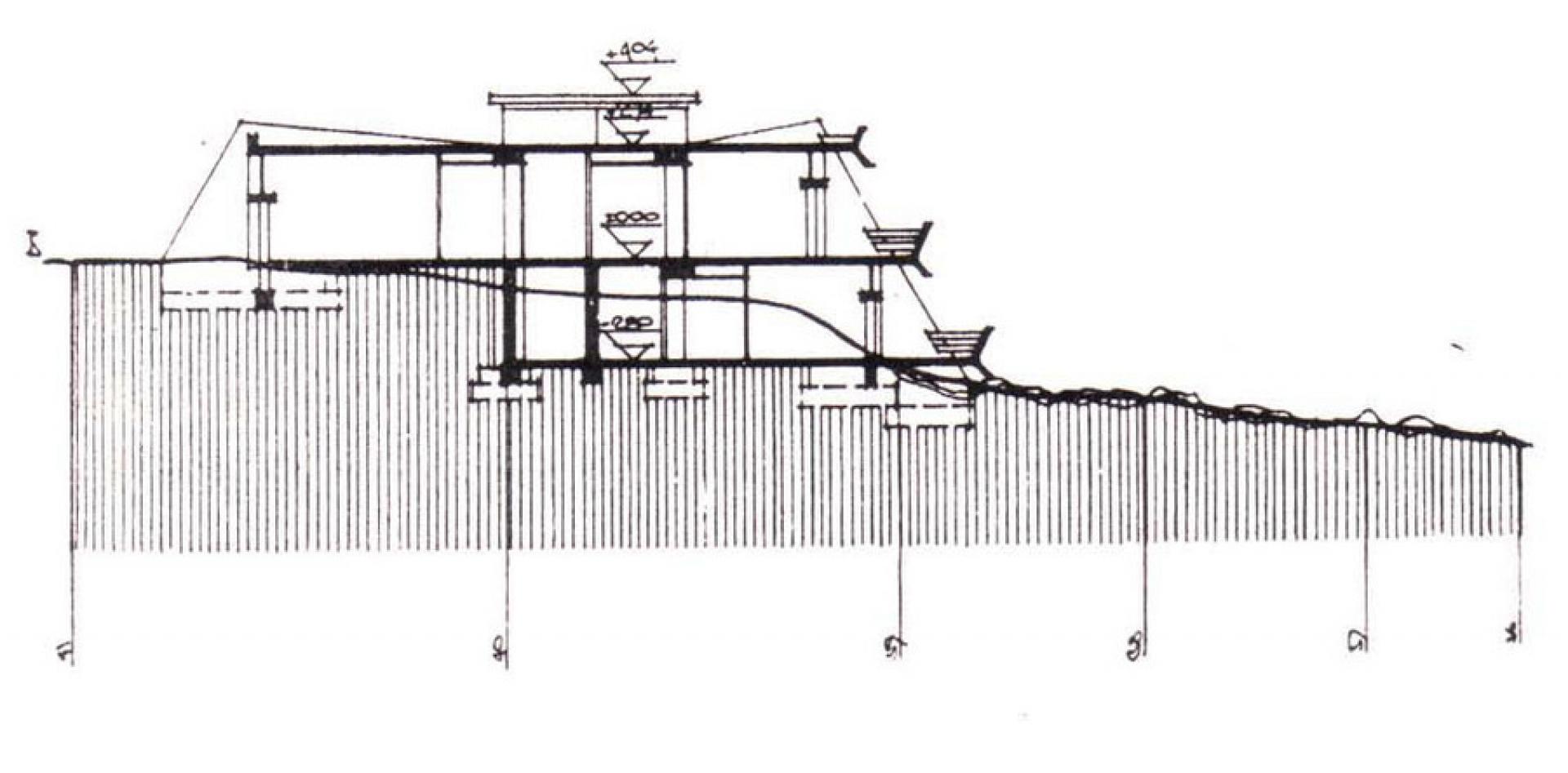

In 2004, the same year it was presented in Venice within the project Montenegrin Eco-logic Lab: Interfaces Between Architecture and Environment, it was privatized: the new owner, Normal Tours Company, bought it from the state for 840.000€ and went on to renovate the building in 2005, altering the original design in the process, especially the interior. The harm that was inflicted did not go unnoticed in the professional community, but the action was rather slow. Finally, Hotel Podgorica was nominated for protection and preservation in 2012 by the non-government organisation Architecture Forum, together with 47 other buildings deemed to be among the most valuable pieces of 20th century architecture in Montenegro. The list, along with the description of the most distinguishing features of each of these objects, was submitted to the Ministry of Culture. However, the response never arrived, and another few years had passed until the condition of Hotel Podgorica and its surroundings captured the attention of the wider public.

The interior of Hotel Podgorica in the 1970s | Photo © Podgorički cikotići
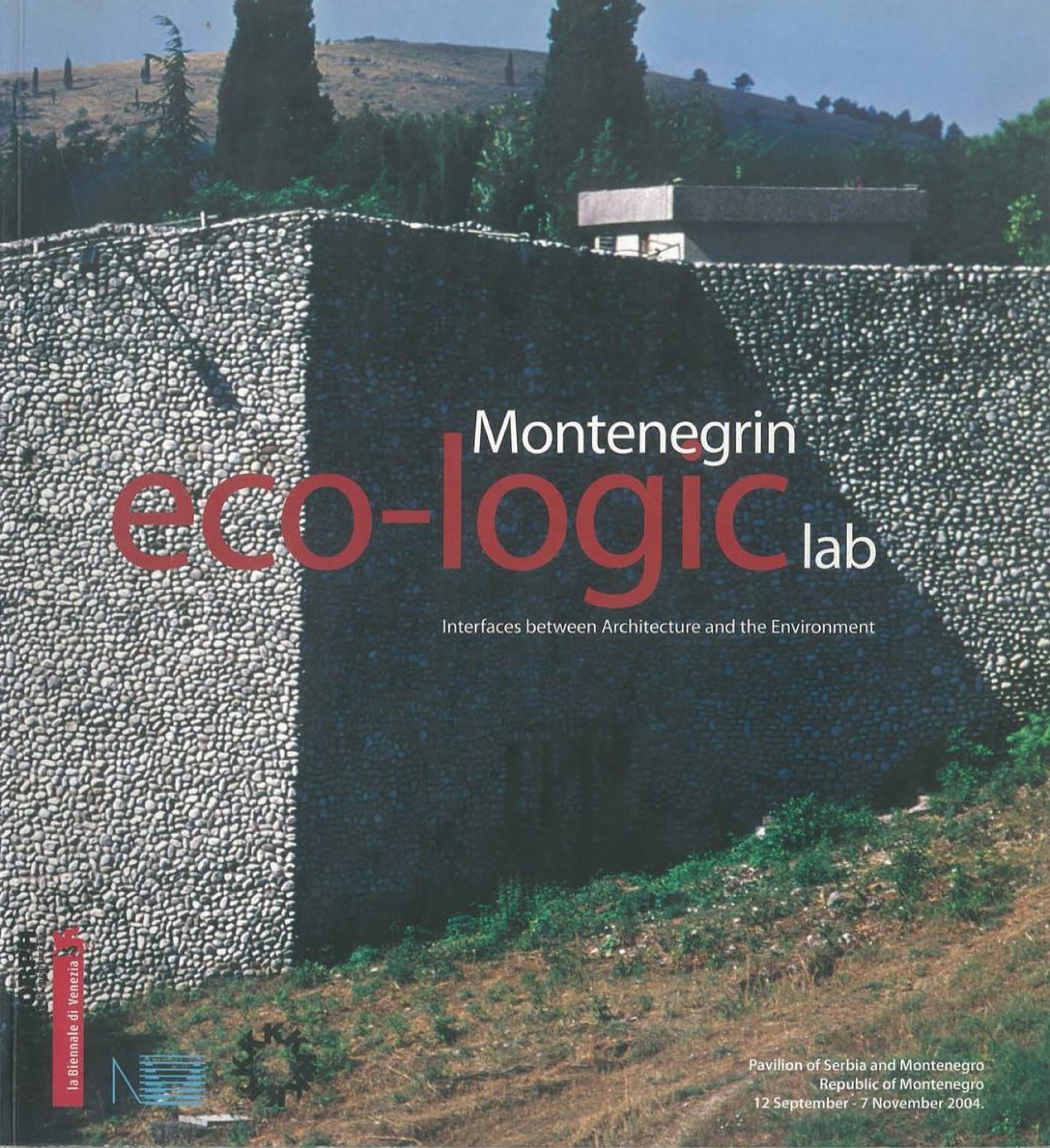
Hotel Podgorica was presented in Venice Biennale in 2004, as part of Serbia and Montenegro Pavilion
Towards the end of the 2015, the construction works started right next to the hotel walls; it turned out that a new office tower was to be built in a proximity and at the scale which would be distructive both for the hotel building and for its harmonious riverbank surroundings. This new development was outlined by the 2012 detailed urban plan for the area, but the proper public discussion, including expert analysis and media reports, happened only after the ground was broken and the construction of the tower became apparent and imminent. In the week following the start of the works 14 young architects signed a letter explaining the extent of devastation that is about to happen if the original plans are permitted to materialize. The letter was widely shared and reprinted, and in the following days the news of new construction threatening Hotel Podgorica have spread through social media and provoked wider action aimed at criticizing and stopping the project.
A group of young architects, most of whom have gathered around the letter of protest, started a Facebook group which they named KANA, short for the rhetorical question of “Ko ako ne arhitekt?”, meaning “Who if Not Architect?”. The name draws attention to the importance of having architects stand up against the destructive urban development policies and for the preservation of architectural heritage, and honours Svetlana Kana Radević, whose most famous work these young architects in action were trying to protect. Facebook group gained traction and got public attention, making it easier to disseminate information about the plans for further activities.
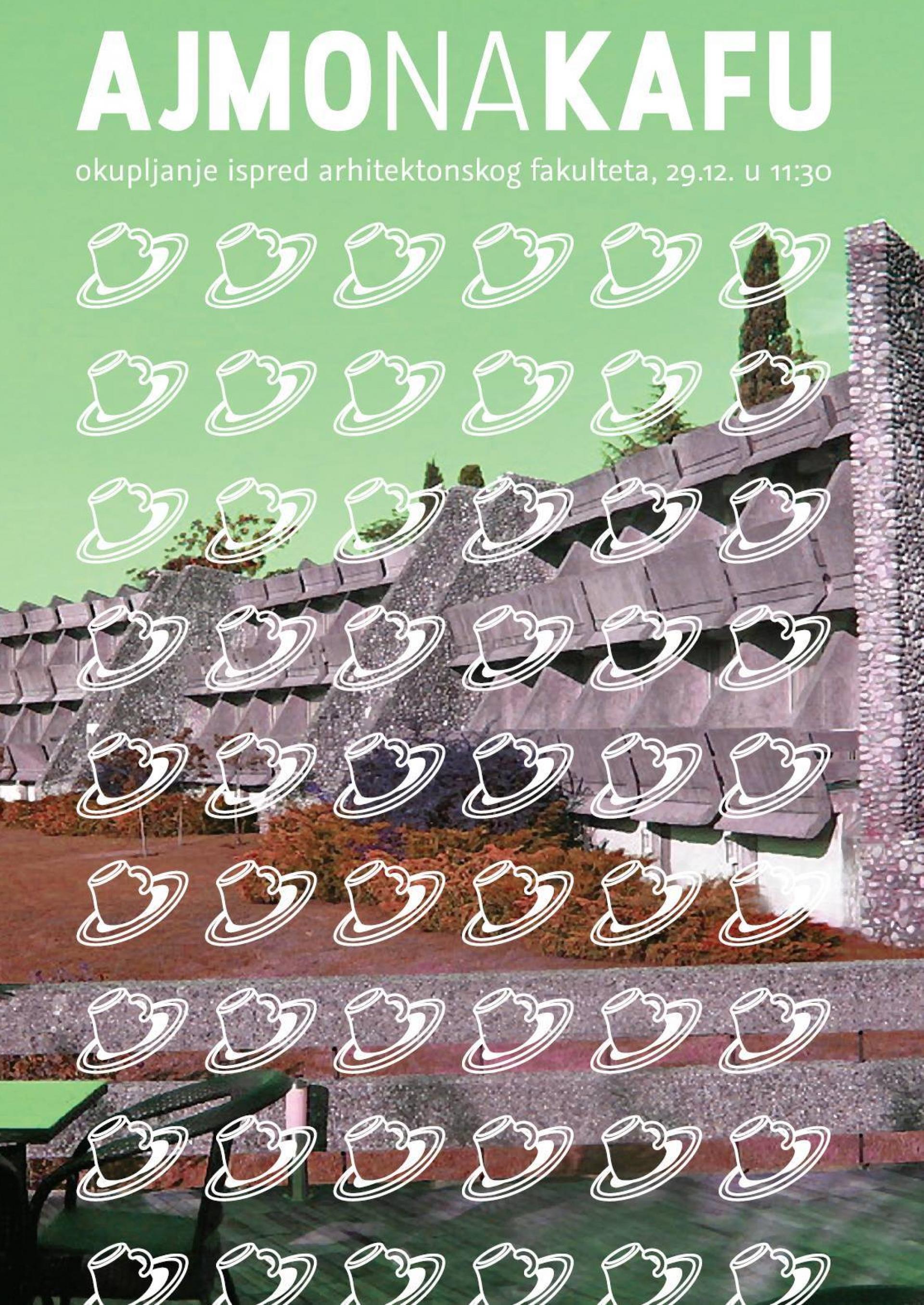
Invitation to the protest: come have a coffee! | Design © Srdja Dragović
The first such activity was to publish the manifest detailing the expert attitude of the KANA group regarding the new construction, along with their requests: to secure the status of the cultural heritage of the highest order for Hotel Podgorica; to set the exact borders of the territory surrounding the building, which should also be protected as cultural heritage; to abolish the urban plan which permitted the new construction, and to stop the construction process immediately. This proclamation was followed by a short protest walk of around 60 students of architecture, from the Faculty of Architecture to Hotel Podgorica, where they were joined by a group of citizens supporting the cause, and where the demands of the KANA group were reiterated. While promoting the protest, the organizers actually invited citizens of Podgorica to “come have a coffee at the hotel,” teasing at the same time the proverbial inaction of Podgorica students and the general lack of protest activity in the city, and pointing towards the obvious and cynical necessity to consume in order to access the building which should be designated as cultural heritage. Support and endorsement of the cause came from numerous established architects, NGOs, public figures, intellectuals, as well as from political parties and associations. Docomomo International supported the effort as well.

The protest in December 2015 | Photo © KANA/Ko ako ne arhitekt
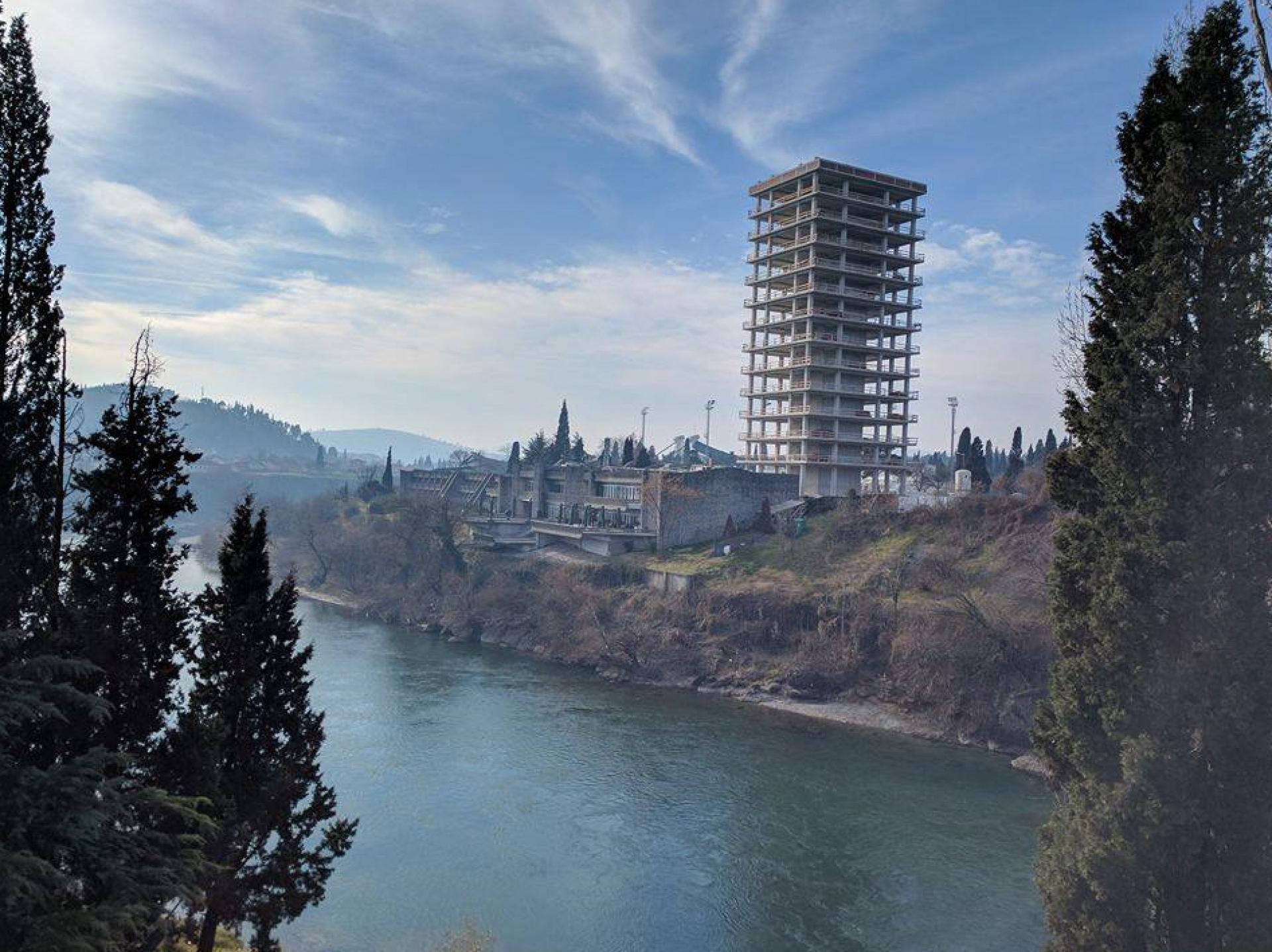
The construction of the new office tower, January 2017 | Photo © KANA/Ko ako ne arhitekt
For the entire next year, KANA group continued the action towards achieving the goals they outlined and publicized with this protest - to protect the hotel, and halt the construction of the tower which was already, ominously, starting to grow in its immediate vicinity. The evidence which the group gathered by analyzing the planning documents and building permits were substantial enough for the Urbanism Inspection to suggest revoking the building permit for the tower, and for the Administrative Court to rule in favor of this suggestion. However, the City of Podgorica took no action, and the building was soon completed. In a parallel process, the initiative the group submitted to the Ministry of Culture in 2015 – aimed at protecting the hotel building and its surrounding area, as the two form a historical, architectural, visual and functional whole – was not accepted. At the time, the Ministry explained the decision by stating that their experts have already started working on the elaborate on the valorization of cultural values of the Hotel Podgorica and that this building will “soon” get the status of the protected cultural property. This was almost five years ago; the status remains unchanged.

Hotel Podgorica and its surroundings today | Photo © Lazar Pejović
This November, to mark 83 years since the birth and 20 years since the death of Svetlana Kana Radević, KANA/Ko ako ne arhitekt group has submitted another initiative to the Ministry of Culture, requesting once again for the building to be recognized as the cultural heritage and for its integrity to be protected. This action was inspired by several recent developments, which neatly illustrate how political and economic changes and global and local flows have the power to swiftly change and shape our urban environments. Namely, a couple of months ago the hotel was sold to a new private owner whose plans for the building are still unknown but might involve substantial changes to the structure – especially if the owner decides not to continue using the building for the hotel business, largely unprofitable during the global pandemic. If the hotel remains unprotected, the building might be further damaged, or even destroyed; hence, it is necessary to establish the protection as soon as possible. A factor that might influence the process is the recent election victory of the Montenegrin opposition, which means the state’s government is about to change, and the new ministry in charge of cultural heritage might be more sympathetic towards this initiative. It is encouraging that, apart from the architects and researchers, this time the initiative was also signed by the leaders of the new majority in the Montenegrin Parliament. This also, hopefully, indicates that the new Government might handle the issues related to spatial development, urban planning and built heritage in a more studious and serious manner.
The struggle to protect Hotel Podgorica was started by KANA group five years ago and it is still ongoing. Much has changed in the meantime, including the active group membership, to which I also joined in 2017. One aspect, however, stays the same: since 2015, KANA group works to bring the conversation about the urban problems to the broader audience, to equip citizens with information and understanding of the sources and effects of these problems, and to help local communities advocate for their spatial rights. We will continue to do so. Meanwhile, here’s a bold suggestion: let’s return Hotel Podgorica to public ownership and transform it into a space for thinking and conversing about the architecture, urbanism, the issues of spatial development, and the right to the city.
—
By Sonja Dragović